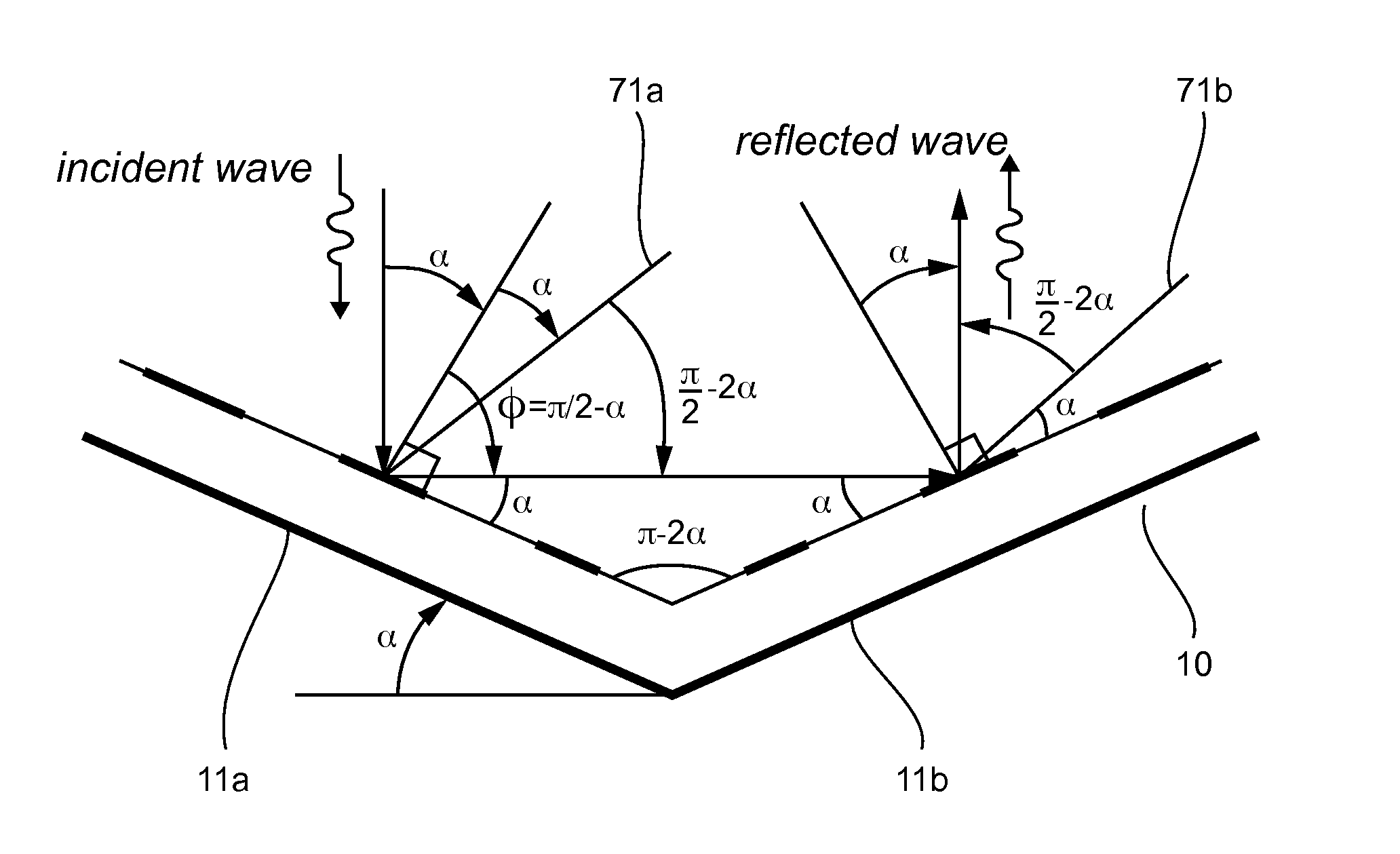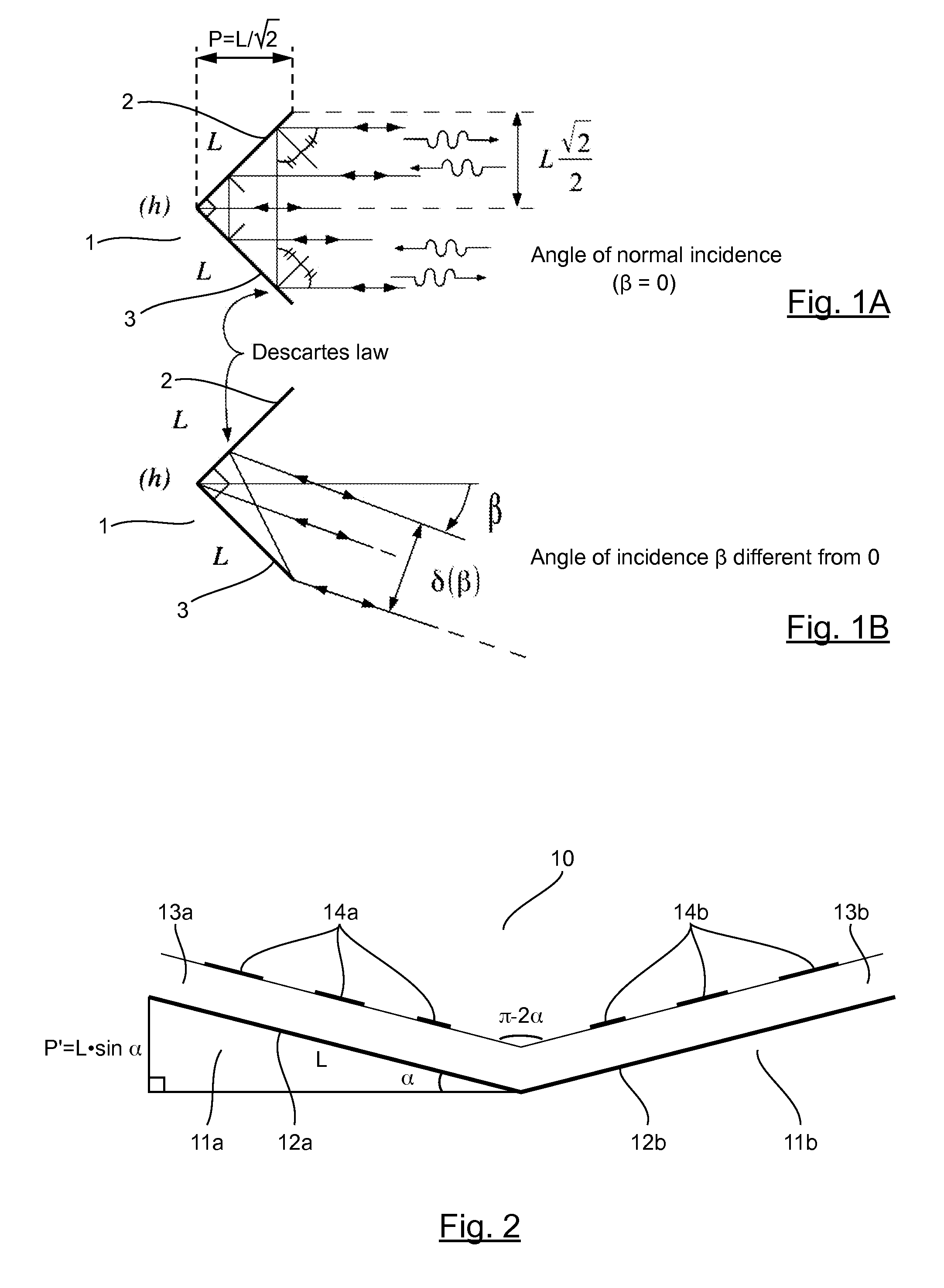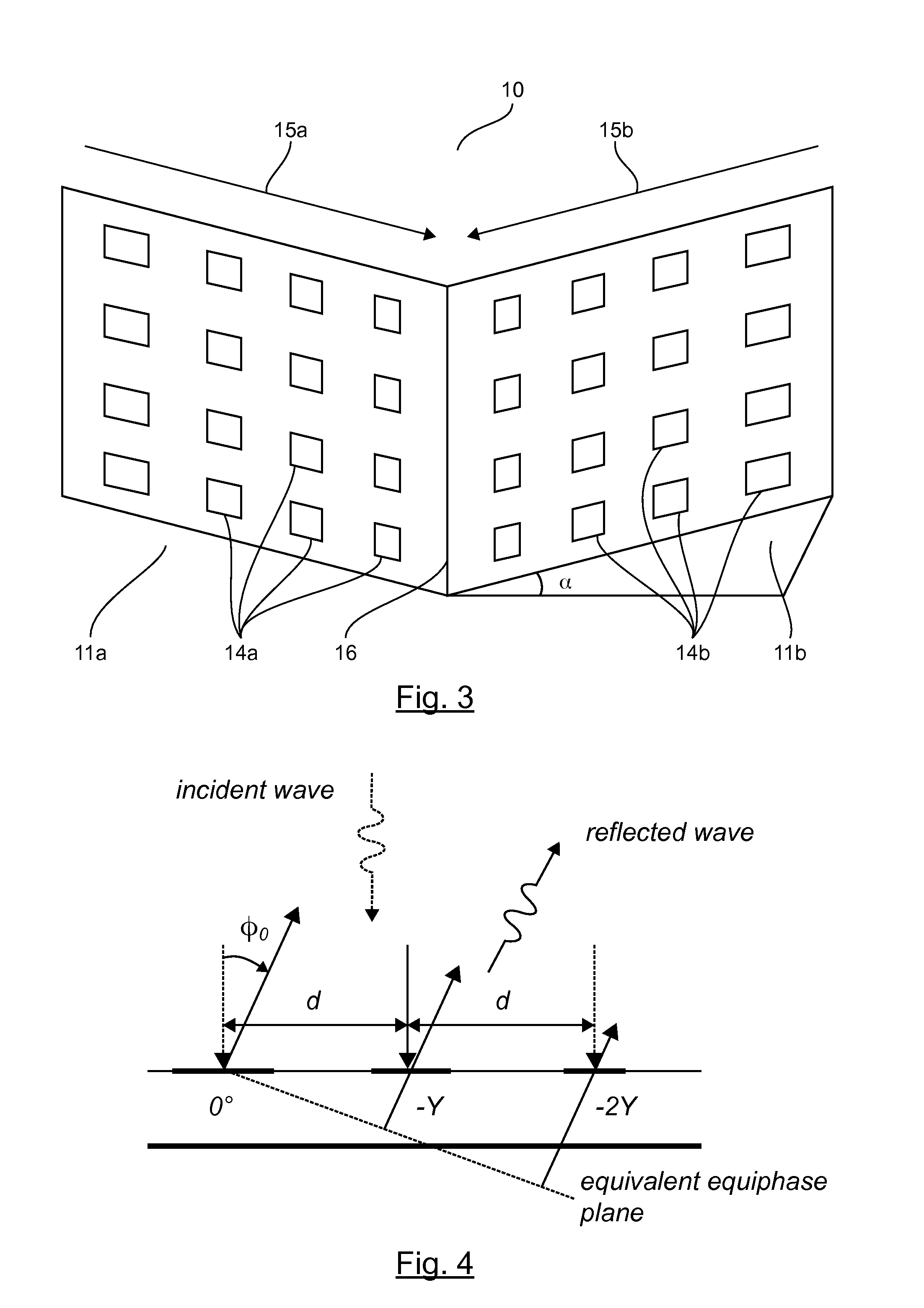Flattened Dihedral-Shaped Device Possessing an Adapted (Maximized Or Minimized) Equivalent Radar Cross Section
a dihedral-shaped, dihedral-shaped technology, applied in the direction of antennas, electrical equipment, etc., can solve the problems of parasitic radiation and complexity in design, more difficult structure implementation, and destructive summation of waves reflected by each of these materials, so as to achieve the effect of maximizing the rcs
- Summary
- Abstract
- Description
- Claims
- Application Information
AI Technical Summary
Benefits of technology
Problems solved by technology
Method used
Image
Examples
case 1 (see fig.5)
[0066]Case 1 (see FIG. 5): the angle of incidence β introduces an additional phase delay relative to the configuration of the wave in normal incidence and the new phase law γ can be written as follows:
γ=k0 d sin (φ)=k0 d sin (φ0)+k0 d sin (β)
[0067]where φ0 corresponds to the deviation of the reflected wave for the wave in normal incidence (see FIG. 4).
case 2 (see fig.6)
[0068]Case 2 (see FIG. 6): the angle of incidence β introduces a phase lead relative to the configuration of the wave in normal incidence and the new phase law γ can be written as follows:
γ=k0 d sin (φ)=k0 d sin (φ0)−k0 d sin (β)
[0069]with the same meaning for the angle φ0 as in the case 1.
6.3 Geometry of the Problem
[0070]FIG. 7 illustrates the operation of the device 10 of FIG. 2 for a plane wave in normal incidence relative to the rear equivalent plane of the device.
[0071]This FIG. 7 therefore describes the geometry of the problem of the dihedron known as the “flattened” dihedron when the incident wave is normal to the equivalent backplane, i.e. when the incident wave forms an angle α with the normal to the surface of the phase shifter array of the left-hand plate 11a (normal of the surface of those plates 11a, of the two plates 11a, 11b that receive the incident wave). This configuration is called the “zero incidence configuration”.
[0072]In this example, we describe the different...
PUM
 Login to View More
Login to View More Abstract
Description
Claims
Application Information
 Login to View More
Login to View More - R&D
- Intellectual Property
- Life Sciences
- Materials
- Tech Scout
- Unparalleled Data Quality
- Higher Quality Content
- 60% Fewer Hallucinations
Browse by: Latest US Patents, China's latest patents, Technical Efficacy Thesaurus, Application Domain, Technology Topic, Popular Technical Reports.
© 2025 PatSnap. All rights reserved.Legal|Privacy policy|Modern Slavery Act Transparency Statement|Sitemap|About US| Contact US: help@patsnap.com



